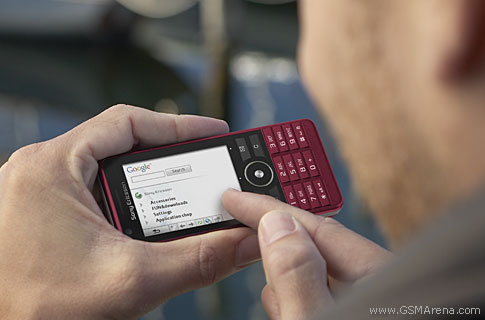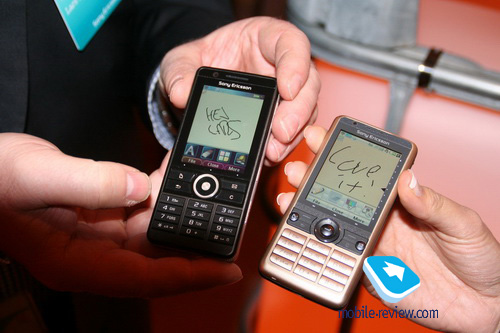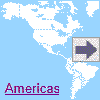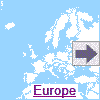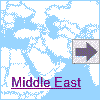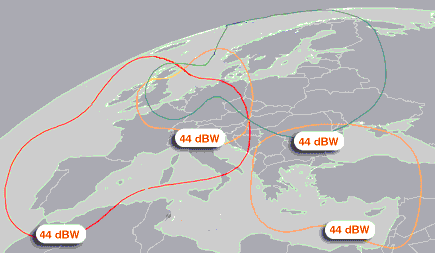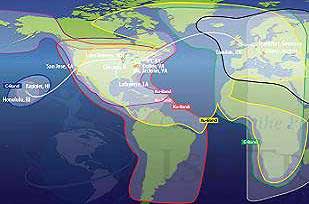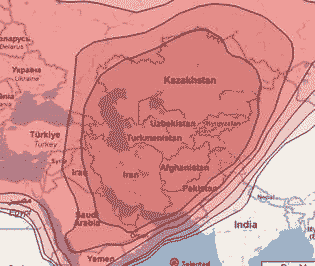and other investors to bring cheaper, high-speed wireless Internet access to areas unlikely to see investments in fiber infrastructure.
O3b stands for "other 3 billion," a reference to the world's population that still can't access the Internet. O3b, which is based in the U.K.'s Channel Islands, said construction is under way on 16 satellites that will drop the cost for ISPs and operators to provide Internet access over 3G (third-generation) and WiMax networks.
Those satellites will provide backhaul capacity, also known as "trunking," for ISPs (Internet service providers) and operators, essentially moving large amounts of data wirelessly between points where fiber-optic cable has not been dug into the ground, said Greg Wyler, O3b's founder and CEO.
Developed countries benefited from an explosive laying of undersea fiber cables in the late 1990s, Wyler said. But as those high-capacity networks were created, demand dropped. Many fiber companies went out of business, then their assets were bought on the cheap, fostering the subsequent boom in inexpensive broadband subscription offerings, he said.
But "the emerging markets never saw that exuberance," Wyler said. "Usage is growing and the demand is growing, but there isn't the infrastructure to support the demand."
Digging trenches for fiber networks in underdeveloped countries isn't financially feasible, so the alternative is developing a low-latency backhaul network in the sky, Wyler said. Up to 40 percent of a mobile operators' costs are consumed building transmission capacity between its home network and thousands of transmission towers, Wyler said. Laying fiber is expensive, however.
But so is the alternative. Buying backhaul capacity from geosatellites can cost a stunning US$4,000 per megabit per month, but Wyler believes O3b will be able to offer the same capacity for $500 or less by using different, cheaper medium-earth orbit (MEO) satellites.
Geosatellites orbit the earth at an altitude of 22,500 miles, while MEO satellites are around 5,000 miles. The latency, or the time it takes for a signal to make a loop between earth and the satellite, can be upwards of 600 milliseconds for a geosatellite because it is further out. For a MEO, latency is around 120 milliseconds, close to that of a fiber network, Wyler said.
The higher latency of geosatellites doesn't mesh well with JavaScript-heavy Web-based applications, Wyler said. In addition to snappier Web access, Internet subscribers should also see cheaper prices due to the lower cost of backhaul capacity, he said.
O3b's service should be activated by late 2010 and provide speeds of up to 10G bps (bits per second) to other areas including Latin America, the Middle East, Africa and Asia. O3b plans to launch 16 MEO satellites, which can send data anywhere between a 45-degree angle north to a 45-degree angle south of their orbits. The lifespan of a MEO is about 10 years to 15 years.
Among the investors and supporters are HSBC Principal Investments, a private equity provider; Liberty Global, an operator that provides phone and Internet access in 15 countries; and Google, which has supported other initiatives to broaden access to the Internet.
The three entities have collectively invested about $65 million in O3b's project. The total cost of building and launching the satellites is expected to be around $650 million, Wyler said, with the rest of the cost financed through a debt-equity loan.
Google said high-speed access is necessary to use rich, Web-based applications. Use of those applications, ranging from Gmail to Google Docs, also serve to grow the available audience for Google's advertising business, which has propelled the company's success.
Source: www.nytimes.com

